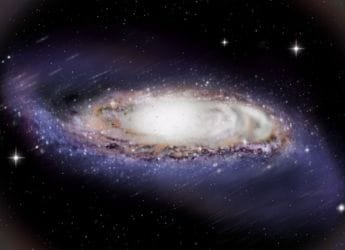- Home
- Science
- Science News
- NASA's TRACERS Mission Rescheduled for 2025 to Explore Solar Wind and Earth's Magnetic Field
NASA's TRACERS Mission Rescheduled for 2025 to Explore Solar Wind and Earth's Magnetic Field
NASA delays TRACERS mission launch to 2025, allowing more preparation time. Twin-satellite project investigates solar wind penetration, polar cusps, and magnetic reconnection events.

Photo Credit: University of Iowa/Andy Kale
NASA Delays TRACERS Mission Launch to 2025 for In-Depth Study of Solar Wind Effects and Dynamics
NASA has refocused its Tandem Reconnection and Cusp Electrodynamics Reconnaissance Satellites (TRACERS) launch date to no earlier than 2025 to provide more time for the mission crew to prepare. This mission is about a pair of satellite studying about how the solar wind, interacts with and enters Earth's magnetosphere, the region around Earth dominated by our planet's magnetic field. Understanding and eventually forecasting how energy from our Sun enters our planet and may affect assets depending on space and the earth depends on research into this interaction.
Mission Objectives
According to NASA, the TRACERS spacecraft will launch on a SpaceX Falcon 9 rocket from Space Launch Complex 4 East at Vandenberg Space Force Base in California. The twin spacecraft will travel around 341 miles above the planet through polar cusps, a short area of the earth's magnetic field where solar wind is concentrated and funneled into our atmosphere.
In order to investigate the location and frequency of a phenomena known as magnetic reconnection near the outer borders of Earth's magnetic field, the TRACERS mission will fly across the northern polar cusp many times each day.
The explosive energy transfer where two magnetic fields meet, particularly in the magnetopause region where the solar wind meets Earth's magnetosphere is termed as magnetic reconnection . This event can cause solar wind particles to enter the atmosphere at high speeds, igniting the northern and southern lights but also creating hazardous conditions for astronauts and satellites, damaging ground infrastructure, communication signals, and aviation.
Mission oversight
David Miles is leading this TRACERS mission at the University of Iowa and it is managed by the Southwest Research Institute in San Antonio. The Heliophysics Division at NASA Headquarters in Washington oversees the project through the Heliophysics Explorers Program Office at the agency's Goddard Space Flight Center in Greenbelt, Maryland. As part of the agency's VADR (Venture-class Acquisition of Dedicated and Rideshare) contract, the launch service is being provided by NASA's Launch Services Program, which is headquartered at the agency's Kennedy Space Center in Florida, in collaboration with NASA's Science Mission Directorate.
Get your daily dose of tech news, reviews, and insights, in under 80 characters on Gadgets 360 Turbo. Connect with fellow tech lovers on our Forum. Follow us on X, Facebook, WhatsApp, Threads and Google News for instant updates. Catch all the action on our YouTube channel.
Related Stories
- Samsung Galaxy Unpacked 2025
- ChatGPT
- Redmi Note 14 Pro+
- iPhone 16
- Apple Vision Pro
- Oneplus 12
- OnePlus Nord CE 3 Lite 5G
- iPhone 13
- Xiaomi 14 Pro
- Oppo Find N3
- Tecno Spark Go (2023)
- Realme V30
- Best Phones Under 25000
- Samsung Galaxy S24 Series
- Cryptocurrency
- iQoo 12
- Samsung Galaxy S24 Ultra
- Giottus
- Samsung Galaxy Z Flip 5
- Apple 'Scary Fast'
- Housefull 5
- GoPro Hero 12 Black Review
- Invincible Season 2
- JioGlass
- HD Ready TV
- Laptop Under 50000
- Smartwatch Under 10000
- Latest Mobile Phones
- Compare Phones
- Xiaomi 17 Ultra Leica Edition
- Xiaomi 17 Ultra
- Huawei Nova 15
- Huawei Nova 15 Pro
- Huawei Nova 15 Ultra
- OnePlus 15R
- Realme Narzo 90x 5G
- Realme Narzo 90 5G
- Asus ProArt P16
- MacBook Pro 14-inch (M5, 2025)
- OPPO Pad Air 5
- Huawei MatePad 11.5 (2026)
- Huawei Watch 10th Anniversary Edition
- OnePlus Watch Lite
- Acerpure Nitro Z Series 100-inch QLED TV
- Samsung 43 Inch LED Ultra HD (4K) Smart TV (UA43UE81AFULXL)
- Asus ROG Ally
- Nintendo Switch Lite
- Haier 1.6 Ton 5 Star Inverter Split AC (HSU19G-MZAID5BN-INV)
- Haier 1.6 Ton 5 Star Inverter Split AC (HSU19G-MZAIM5BN-INV)

















